 There’s no other way of saying this; 2020 has been an awful year and it’s been hard to take any kind of consolation from it. Anyone in the world of music has had to look long and hard to take any positives out of this situation. For many of us, it’s been an opportunity (or maybe a necessity) to look in the rear-view at some of the things we did in the past; gigs that we went to, albums that we bought and people that we met. I’ve moved around the country a fair amount and, in the era before media players and streaming, I had to limit the music I could move around with me. I’m not saying I was limited to five albums or, later, CDs, but these are albums that always made the cut and they’ve still had the same comfort blanket value through two lockdowns. In chronological order:
There’s no other way of saying this; 2020 has been an awful year and it’s been hard to take any kind of consolation from it. Anyone in the world of music has had to look long and hard to take any positives out of this situation. For many of us, it’s been an opportunity (or maybe a necessity) to look in the rear-view at some of the things we did in the past; gigs that we went to, albums that we bought and people that we met. I’ve moved around the country a fair amount and, in the era before media players and streaming, I had to limit the music I could move around with me. I’m not saying I was limited to five albums or, later, CDs, but these are albums that always made the cut and they’ve still had the same comfort blanket value through two lockdowns. In chronological order:
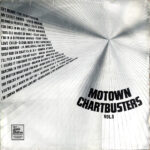 “Motown Chartbusters Vol. 3” – Various Artists
“Motown Chartbusters Vol. 3” – Various Artists
I know; it’s a compilation, but what a compilation. This was the soundtrack of my teenage years; every youth club disco, every party, every time I went to a friend’s house, this album was there. It was perfect timing, with a 1969 release just at the time that I really started to listen to music properly and had a few quid from my paper round to actually buy records.
The Chartbusters series started in 1967; if you’re a cynic, you might accuse Motown of trying to recycle material but it is the music business and it’s fair to say that this series was packed with hits. It was basically a singles industry at that time, so a compilation from a successful company made a lot of sense. So why Vol. 3? Well, the sleeve design evolved as the series progressed, reflecting current social themes, but Vol. 3 was the one where the designers nailed it; it’s simple, bold and incredibly striking and the musical content lived up to the standard of the design.
If a sixteen-song album starts with Marvin Gaye’s “Grapevine” and ends with Smokey’s “Tracks of my Tears”, there’s a lot of wiggle room for the other fourteen songs. Throw in a couple of Stevie Wonder classics, The Temptations’ “Get Ready” and Edwin Starr’s “Stop Her on Sight” and you’ve already got a classic compilation. Take a look at the entire album and it’s studded with classics and minor classics. That’s why it will always have a place in my elite albums.
I bought this the week it was released in September 1977 and took it with me to Dundee for my second year at University. I was in a shared room, but it was with Kev, my room-mate from my first year. We both played guitar and had some musical tastes in common; thankfully Steely Dan was one of those shared tastes. “Aja” was played a lot and we may have smoked some recreational substances, which may have enhanced the listening experience. In my final two years, I had my own room and, again, “Aja” didn’t stay in its sleeve very long. It was starting to look a little worse for wear. You can read the next part of this story in this piece; I don’t want to do it in detail again here. Let’s just say it burned “Aja” into my consciousness and since that time the album’s been a constant companion.
I’d been a Dan fan since the early days and, by this time, I knew to expect the unexpected but this album was something else. They had seven beautifully-constructed and slightly sleazy songs (ok, maybe more than slightly sleazy) and spent studio time with the best session musicians in the world putting together versions of the songs, picking out the seven favourites for the album. They started as jazzers playing rock and with “Aja” they arrived at jazzers playing jazz or maybe jazz-funk; going back to their roots. Like all of the albums mentioned here, this should be in everyone’s collection. It was certainly in the collection of the next band.
I’m Scottish; I’m proud to be a Scot and I used to love the times when the music industry radar periodically located Scotland on the UK map. The mid-to-late eighties was one of those periods; Deacon Blue were one of the bands to be signed and they’re still recording and gigging today. I saw them at Cornbury a couple of years ago and they sounded great with songs covering a period of thirty years. The band members mostly have new day jobs now; Ricky Ross is a radio broadcaster and Dougie Vipond is a TV presenter with BBC Scotland, but that’s all irrelevant when the sticks click and the band fires up.
I bought “Raintown” on vinyl originally and I still have that copy now. The title song was a tribute to Glasgow that spliced Blue Nile with Springsteen to create a wide canvas sound that came to define the band. As much as I loved that song, and the anthem “Dignity”, it was “When Will You (Make my Telephone Ring?)” that I connected with. It was a soul song (they even had Jimmy Helms on BVs) and it was over the top and gorgeous. It was part of an album that you needed to listen to from start to finish (turning over the vinyl halfway through), because you wouldn’t want to miss out on the opener “Born In a Storm” or the yuppie tale “Chocolate Girl”.
And you know that the Steely Dan connection is “Deacon Blues” from “Aja”, obviously.
When the Britpop wars broke out, I was missing in action. Why would anyone hitch themselves to bands that were so obviously influenced by sixties pop. Oasis was The Beatles without the subtlety and Blur was an arch Goldsmiths-enabled Kinks tribute band. We had to be better than that and I’d already committed myself to a band that had much more in common with the East Midlands surroundings I knew as a teenager. The band was from Sheffield and the songs reflected life in the North Nottinghamshire/Derbyshire/South Yorkshire area; Blur and Oasis were copying sixties bands while Pulp felt much more like a musical interpretation of Stan Barstow’s short stories.
“His ‘n’ Hers” was the breakthrough album: it wasn’t the album with the anthems that followed it and turned Pulp into an arena and Glastonbury-headlining band. “Different Class” featured “Common People” and “Disco 2000”, both complete bangers and remixed to within an inch of their lives; as much as I loved them, I still identified much more with the characters and the narratives of “Lipgloss”, “Babies”, ”Acrylic Afternoons” and “Do You Remember the First Time?”. This is still my favourite Pulp album and probably my favourite ‘Britpop’ album.
Only a few months after “His ‘n’ Hers” and so different. If Sheffield defined Pulp, then Bristol defined Massive Attack. The first Massive Attack album “Blue Lines” three years earlier was already firmly embedded in my consciousness. “Unfinished Sympathy” was a classic single and Shara Nelson had a perfect voice to front up the songs. Massive Attack wasn’t a prolific band (quality rather than quantity) and by the time “Protection” came along, Shara had moved on, replaced by a mix of singers and rappers including Tracey Thorn, Tricky, Nicolette and Horace Andy. Along with close neighbours Portishead, Massive Attack defined trip-hop, mixing influences from hip-hop and dub, creating a sound that was both ambient and punchy.
The title song has always pushed my buttons; it’s gorgeous. The bass is thunderous (particularly for a slow ballad), while the guitar, keys and vocals are all crystal clear with a shimmering touch of reverb. The mix is full of space and all of the individual elements stand out. And there’s Tracey Thorn’s almost effortless but incredibly powerful vocal. It’s a classic song and it sets the tone for the album; loads of punchy bass and spacy, dubby mixes – trippy even. The kind of music that might accompany a spliff or two. Which takes us back to my second selection.
 The Korvids, eh? I’m guessing it’s a korruption of the scientific term for the crow family. Anyway it’s the name given to a project put together by James Grant (surely I don’t have to tell you about his history) and Gordie Goudie (Simple Minds producer and former member of Echo and the Bunnymen and The Primevals). So the obvious collaboration would be a disco album, right? Well, not strictly; it’s certainly a dance album, but there’s a lot more than just disco lurking in “The Korvids”. Is it so far away from the music they’ve made in the past? In James Grant’s case, I would probably say no; he’s always had a bit of a funky element to his guitar playing and he’s not afraid to experiment, so a dance album’s not such a big step. Now a cheerful dance album; that’s another thing entirely.
The Korvids, eh? I’m guessing it’s a korruption of the scientific term for the crow family. Anyway it’s the name given to a project put together by James Grant (surely I don’t have to tell you about his history) and Gordie Goudie (Simple Minds producer and former member of Echo and the Bunnymen and The Primevals). So the obvious collaboration would be a disco album, right? Well, not strictly; it’s certainly a dance album, but there’s a lot more than just disco lurking in “The Korvids”. Is it so far away from the music they’ve made in the past? In James Grant’s case, I would probably say no; he’s always had a bit of a funky element to his guitar playing and he’s not afraid to experiment, so a dance album’s not such a big step. Now a cheerful dance album; that’s another thing entirely.
The album covers a range of styles; the opener ”Bad Faith”, with its four-to-the-floor kick, congas, funky keys, hi-hats, melodic bassline and horns is pure joyous mid-seventies Studio 54. James Grant even throws in an Ernie Isley style guitar solo for good measure. Maybe a hint of the Average White Band in there as well. And that’s just the first song. “Tender Tyrannies” is about old records and the memories attached and has a Soul II Soul feel with a female vocal, squelching synth bass and clipped, funky guitar, “Slouch” has a groove that’s part Steely Dan, part humanistic Kraftwerk and previous single “Beach Coma” has an ambient Goa trance feel with synth pads and swirls and an acoustic guitar hook. Elsewhere, you can hear elements of Massive Attack and Eastern music in “Be My Enemy” and trip-hop in “Are You Bored with Me Baby?”
If you were a clubber in the late eighties/early nineties and you’ve grown up since then, this is the album for you. It feels a bit like the dance production process has been turned on its head; instead of building up from a groove and adding layers to create the finished product, this feels like the songs came first and the backing tracks were written to fit the songs. Either way, it’s a cracking album.
“The Korvids” is released on Friday April 28 on Nang Records.
And while we’ve got you here, how about checking a stunningly good song about Scottish families, another of James Grant’s classics:
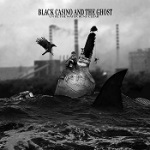 We’ve been waiting for this one for a while now, and I’m chuffed to say it was well worth the wait. The second Black Casino and the Ghost album, “Until the Water Runs Clear” is packed with great individual performances, but the great strength is the way they work together as a band. Elisa Zoot’s voice is stunning and Ariel Lerner’s guitar playing is faultless across a range of styles, but Paul Winter-Hart (drums) and Gary Kilminster play a huge part in the band’s sound, supplying the rhythmic pulse and some melodic and inventive basslines.
We’ve been waiting for this one for a while now, and I’m chuffed to say it was well worth the wait. The second Black Casino and the Ghost album, “Until the Water Runs Clear” is packed with great individual performances, but the great strength is the way they work together as a band. Elisa Zoot’s voice is stunning and Ariel Lerner’s guitar playing is faultless across a range of styles, but Paul Winter-Hart (drums) and Gary Kilminster play a huge part in the band’s sound, supplying the rhythmic pulse and some melodic and inventive basslines.
There are some influences which are woven through the album; there’s more than a hint of sixties pop, and a hint of psychedelia channelled through the trip-hop filter of Portishead and Massive Attack or the shimmering nineties pop of Saint Etienne and Morcheeba. So the obvious opening song is one which sounds like early English folk, isn’t it?
“The Pool” proves that Elisa can do the quieter, more reflective songs as well as the belters, starting with a finger-picked acoustic guitar backing and multi-layered backing vocals, adding shards of percussion, synths and slide guitar before dropping back to the minimalist guitar backing. After the trippy feel of “Age of Contagion” and the monster guitar riff of “Veggie Tarantula” (the two singles so far), it’s a bit of a departure but it’s very effective.
The sixties influence is clearest in “Soul Mall”, the bass-led “Sherry” where Elisa delivers the verses in a cool, almost dismissive style, and “Mr Puppeteer” and “Hoochie Coochie Lover” where Ariel plays in a clipped, precise style that’s very Hank Marvin, or maybe it’s just like Eddie. Apart from the obvious “Lucifer, Lucifer, Lucifer”, there’s a darkness and obsession suffusing the album, and it surfaces in lines like ‘Wish I could skin you, look at what’s in you’ in “Hoochie Coochie Lover”; it’s challenging and not always comfortable but, if comfort’s what you want, you should be listening to Smooth Radio.
There are still a few more stylistic twists and turns to the album; “Tarjeteros” has an Ennio Morricone feel, “Bitter Beast” contrasts a verse with a hint of Bjork with a wall of sound chorus, while the album’s last song, “Solar Storm”, closes the circle with Elisa’s controlled vocal over a sparse arrangement that builds with keyboards and backwards effect before fading into the ether.
I don’t think I’ve heard a better album than “Until the Water Runs Clear” this year; Black Casino and the Ghost have created an album that’s full of hooks to grab your attention, but is full of dark and mystical undercurrents to keep you enthralled.
“Until the Water Runs Clear” is out now on Amazon and iTunes. Go on, treat yourself to an early Christmas present.
If you want to see Black Casino and the Ghost live (and you really should), they’re playing at The Finsbury on December 8th and it’s completely free.
 In many ways Tahliah Barnett still sounds like many thought the future would in 1995. More sinuous and fragile maybe, but twenty-six year old FKA Twigs is much indebted to the Bristol’s trip-hop takeover in the mid-nineties and in particular Adrian Thaws, AKA Tricky. Along with Massive Attack and Portishead, Tricky defined the period with his doomy and sensual debut album “Maxinquaye” which featured soulfully threatening vocals from his favourite muse Martina Topley-Bird, and it’s this artist who springs to mind more than any other whilst listening Barnett’s vocal abilities. Against the skipping, tapping and whirring percussion noises, sporadic booming bass and hip hop and trap time-signatures, Barnett delivers two variations – a barely-there, traditional r’n’b fluttering falsetto and a surprisingly clear contralto; a marvellous, devastating contrast frequently exchanged during the same song.
In many ways Tahliah Barnett still sounds like many thought the future would in 1995. More sinuous and fragile maybe, but twenty-six year old FKA Twigs is much indebted to the Bristol’s trip-hop takeover in the mid-nineties and in particular Adrian Thaws, AKA Tricky. Along with Massive Attack and Portishead, Tricky defined the period with his doomy and sensual debut album “Maxinquaye” which featured soulfully threatening vocals from his favourite muse Martina Topley-Bird, and it’s this artist who springs to mind more than any other whilst listening Barnett’s vocal abilities. Against the skipping, tapping and whirring percussion noises, sporadic booming bass and hip hop and trap time-signatures, Barnett delivers two variations – a barely-there, traditional r’n’b fluttering falsetto and a surprisingly clear contralto; a marvellous, devastating contrast frequently exchanged during the same song.
t may not be 1995 anymore and explicit and unimaginative sexuality has replaced mystery and ambiguity and this is what has partly driven what seems an uncommonly insatiable appetite for this young singer who almost constantly remains somewhat hidden in all respects. “LP1” was preceded by two 4-track EPs which have served as an introduction to the singer (none of those tracks are included here) and accompanying each of these songs was a highly stylised video; no-one could tell who this person was though, so obscured by the surreal and vivid images – a slippery and repeatedly oral Chris Cunningham cum Grace Jones “Corporate Cannibal” body-morphing aesthetic. These portraits proved irresistible and have made FKA Twigs the absolute doyenne of tumblr cool; the hype starts here indeed. Stripped then of these visuals as one is when listening to the 10 tracks here (at the time of writing only one song has visual accompaniment), the overall impact is not always as strong when relying entirely on melodic and sonic ability but a lot of the time it exceeds what has been heard to date such is the strength of the song writing.
“Two Weeks” is a massive and masterful song, the highlight of “LP1”, and its straight-out-of-the-box perfection would be an achievement for any artist, new or established. Staccato delivery and clipped annunciation surround the only explicit references to sex, and sexual competitiveness, on the album. ‘I can fuck you better than her…..my thighs are apart for when you’re ready to breathe in’ is an example of this but it’s the reference to ‘pull out that incisor’ and ‘flying like a screaming falcon’ that add another altogether otherworldly layer that so befits what we know of Barnett, a darker and by far more disturbing extreme to go to. “Video Girl”, like “Two Weeks”, is another of the more typically structured and sturdier songs which will have people reeling off names like Brandy, Aaliyah and Tweet – sweet-voiced r’n’b artists who actively encouraged producer involvement to create music that was bleaker and more experimental than the norm expected at the time within the genre. But “Video Girl” is autobiographical; it references her time as a dancer in music videos by the likes of Jessie J and Kylie Minogue immediately before this album’s release and the subsequent change of hierarchy. ‘Is she the girl that’s from the video?’ leering demand is met with Barnett’s subsequent denial ‘I can’t recognise me’. The second chorus slows down just enough for the listener to think there may be a fault with their copy of the track, as though it’s malfunctioning; it’s a disquieting and magical little trick.
“Hours” creaks up slowly like a sticky corrugated shutter, produced by indie female favourite Dev Hynes, and has the best example of this soft / hard vocal dynamic where the later verses become strident demands as opposed to the earlier girly infatuations. “Closer” is sublime Gregorian chamber pop ending with the devastating (I think) ‘all these years in isolation, isolation, isolation’ and “Give Up” sees the singer take the role of forceful encourager and rock. “Pendulum” starts with the clack of a stick being rattled around a cotton wool lined barrel with Barnett sounding as though she may dissolve into the background due to emotional upheaval. It’s one of the songs here, and odd therefore that it’s the sole production by pop god Paul Epworth, that feels pleasant enough but inadequate – the most surprising thing you could say about Barnett, certainly. But it’s misleading as eventually it becomes somewhat of a centrally-placed heart to the album and its warmth burns through you. “Lights On” and album closer “Kicks” are at the weaker end of “LP1”, both tracks promise something that never fully develops or is reached and it’s here that Barnett is reminiscent of Kelela’s “Cut 4 Me” and the slow jams that appear on her album. Production levels are startlingly high and the vocals are pure r’n’b sweetness but there is a little either in the way or melody or mood here.
“LP1” is a record that at first seems to be somewhat slight considering the heft of everything that surrounds it. I was lucky enough to have this album a good two weeks before it was released and can say that after initially forming an opinion that wasn’t as favourable as this one, it kept drawing me back. It was as though I hadn’t heard all of the tracks yet but had retained enough of a clatter or a buzz or a divine falsetto being slowed down to a stuttering machine that I needed to go back and finish them properly, to give the record a fair chance. It’s only through these repeated listens that some of the tracks here really show themselves; it isn’t a slight record at all, far from it in fact. FKA Twigs debut is wholly impressive and bewitching and stands up as a cohesive and single-minded debut; let it also be known that she also wrote every track here. A brilliant and wholly exciting new talent on the British black music scene, whatever that music may be.
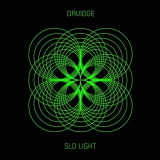 Smith & Mighty predate trip-hop by a couple of years or so, but their genre mix-up of soulful but downcast vocals and beats derived from hip-hop were a precursor to the sound that was to follow. They are still best known for their 1988 forlorn and slowly thumping cover versions of Burt Bacharach’s “Walk on By” and “Anyone Who Had a Heart”, massive club hits both of them. Neil Davidge was a core figure in trip-hop’s golden years, his most high profile work being on the second and third Massive Attack albums.
Smith & Mighty predate trip-hop by a couple of years or so, but their genre mix-up of soulful but downcast vocals and beats derived from hip-hop were a precursor to the sound that was to follow. They are still best known for their 1988 forlorn and slowly thumping cover versions of Burt Bacharach’s “Walk on By” and “Anyone Who Had a Heart”, massive club hits both of them. Neil Davidge was a core figure in trip-hop’s golden years, his most high profile work being on the second and third Massive Attack albums.
“Slo Light” is the title track from Davidge’s forthcoming album and features remote but yearning vocals by little-known New York-based Living Days singer, Stephonik Youth. The album version takes time to build from music box twinkles to threatening strings and in many ways is Davidge’s new version of “Teardrop”, the song he coaxed Elizabeth Fraser into recording for Massive Attack. Rob Smith’s remix stays close to the original version’s intentions, certainly in mood, but unsurprisingly amplifies the r’n’b elements with a persistent tom-tom drum effect to make this more of a post-club track rather than straight chill out. It’s starker than the album version and Youth’s vocals are more vivid and dominant and the push of melancholy is stronger and more immediate.
This excellent interpretation of one of Davidge’s most seductive tracks should whet your appetite for his very strong debut album, featuring Sandie Shaw and Cate Le Bon amongst others, coming early next month. I wonder if the involvement of Rob Smith indicates that Smith & Mighty may also return to the musical forum? That would be cause for a double celebration.
Ok, call me obsessive if you like but as well as listening to a lot of albums and going to as many gigs as I can, I also read the odd book or two about music and popular culture and many of those are worth sharing with anyone who checks out MusicRiot regularly. This list was difficult to pin down to five from the start, but it became even more difficult on Christmas Day when I was given a copy of the Donald Fagen memoir/tour diary/article compilation, “Eminent Hipsters”. So I guess that’s a pretty good place to start.
“Eminent Hipsters” – Donald Fagen
 Where do I start with Donald Fagen? With Walter Becker, he was half of one of my favourite 70s bands, Steely Dan and then went on to release the classic solo album, “The Nightfly” in 1982, followed (not too closely) by “The Kamakiriad” in 1993. You’ve probably guessed by now, I’m a bit of a fan. “Eminent Hipsters” is partly an explanation, through a series of articles, of the factors which influenced the Steely Dan sound (cool jazz, cop dramas and wise-ass comedians) and the Donald Fagen solo sound (science fiction and mid-century paranoia). If you love the music, you’ll be fascinated by these observations about its roots. The second part of this slim volume is devoted to Fagen’s diary from the 2012 “Dukes of September Rhythm Revue” tour which is, by turn, snarky, moving, insightful and downright hilarious.
Where do I start with Donald Fagen? With Walter Becker, he was half of one of my favourite 70s bands, Steely Dan and then went on to release the classic solo album, “The Nightfly” in 1982, followed (not too closely) by “The Kamakiriad” in 1993. You’ve probably guessed by now, I’m a bit of a fan. “Eminent Hipsters” is partly an explanation, through a series of articles, of the factors which influenced the Steely Dan sound (cool jazz, cop dramas and wise-ass comedians) and the Donald Fagen solo sound (science fiction and mid-century paranoia). If you love the music, you’ll be fascinated by these observations about its roots. The second part of this slim volume is devoted to Fagen’s diary from the 2012 “Dukes of September Rhythm Revue” tour which is, by turn, snarky, moving, insightful and downright hilarious.
Donald Fagen writes in an instantly-identifiable style betraying a debt to Raymond Chandler and Dashiell Hammett, which sneaks in when describing Audrey Hepburn in “Breakfast at Tiffany’s” as getting :”out of that cab on Fifth Avenue in a black dress and pearls in the early morning, I wanted to sip her through a straw”. It’s beautifully written and you can get through it in a few hours; it takes 170 pages to deliver a message that most rock biographies take at least five times as long to get over.
“Bedsit Disco Queen: How I Grew Up and Tried to be a Pop Star” – Tracey Thorn
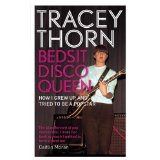 If Donald Fagen’s prose style is easily identifiable, then Tracey Thorn’s is even more so. I’m always impressed when musicians get this right (Peter Hook and Luke Haines also do it particularly well) and, from the first paragraph, this is pitch-perfect ‘Popstar Trace’. The book takes us from the Marine Girls beginnings through the EBTG false starts and eventual success to the beautiful Massive Attack vocals (I’m biased, but you should read about the origins of the modern classic, “Protection” here) and the worldwide Todd Terry-remixed success of “Missing”.
If Donald Fagen’s prose style is easily identifiable, then Tracey Thorn’s is even more so. I’m always impressed when musicians get this right (Peter Hook and Luke Haines also do it particularly well) and, from the first paragraph, this is pitch-perfect ‘Popstar Trace’. The book takes us from the Marine Girls beginnings through the EBTG false starts and eventual success to the beautiful Massive Attack vocals (I’m biased, but you should read about the origins of the modern classic, “Protection” here) and the worldwide Todd Terry-remixed success of “Missing”.
Tracey’s style is perfectly self-deprecatory; you never feel a hint of false modesty and the mentions of famous musicians are always very matter-of-fact, including the story about waiting to pick the kids up from school and being shouted at by George Michael from a Range Rover. This is a wonderful memoir from a genuine pop star.
“Yeah, Yeah, Yeah: The Story of Modern Pop” – Bob Stanley
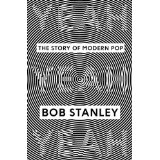 It’s obvious from the outset that this is actually a companion piece to the classic 2012 St Etienne album, “Words and Music”. The album was a voyage through the history of British pop music and the book is an extended verbal remix of the ground covered by the album. What’s equally obvious is that Bob Stanley is both an enthusiast and an insider, which gives him a unique perspective on his subject. He aims to show the links between different styles using not just the music, but also sociological and technological developments. If you’re interested in the history of pop music and you’ve done a bit of research, you might disagree with some of his pronouncements, but it’s a big book and you’ll probably agree with ninety per cent of them.
It’s obvious from the outset that this is actually a companion piece to the classic 2012 St Etienne album, “Words and Music”. The album was a voyage through the history of British pop music and the book is an extended verbal remix of the ground covered by the album. What’s equally obvious is that Bob Stanley is both an enthusiast and an insider, which gives him a unique perspective on his subject. He aims to show the links between different styles using not just the music, but also sociological and technological developments. If you’re interested in the history of pop music and you’ve done a bit of research, you might disagree with some of his pronouncements, but it’s a big book and you’ll probably agree with ninety per cent of them.
The book takes the first NME chart in 1952 as its starting point (which is logical and not controversial) and the end of vinyl as a chart force in 1993 as its end point, when the first Number One singles not to have been released as a 7” single or (a few months later) on vinyl at all topped the charts (if you want to know what they are, you can buy the book ). It’s a slightly more controversial choice but still with a logical basis for someone who grew up in the age of vinyl. The book has an authority derived from Bob Stanley’s experience as a writer and member of a very successful pop group but never slips into the socio-cultural academic approach of, for example, Simon Reynolds. The theme that underpins everything else in this book is that Bob Stanley is still a fan who wants you to come round and listen to his records, and that makes this an unmissable book.
“Here Comes Everybody: The Story of the Pogues” – James Fearnley
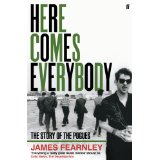 I’ve always been a fan of the “inside story” biography, particularly those that aren’t ghost-written attempts at cultural revisionism. This memoir by James Fearnley is, at times, brutally and crushingly honest about members of The Pogues and he doesn’t spare himself either. The book begins by setting the scene with Shane MacGowan’s departure from the band in 1991 before moving back to Fearnley’s initial meeting with MacGowan at an audition for The Nips in 1980.
I’ve always been a fan of the “inside story” biography, particularly those that aren’t ghost-written attempts at cultural revisionism. This memoir by James Fearnley is, at times, brutally and crushingly honest about members of The Pogues and he doesn’t spare himself either. The book begins by setting the scene with Shane MacGowan’s departure from the band in 1991 before moving back to Fearnley’s initial meeting with MacGowan at an audition for The Nips in 1980.
The book is a (mainly) unsentimental account of the rise and fall of The Pogues from the viewpoint of someone close enough to see everything but with enough distance to retain some objectivity. From the chaotic managerless beginnings through the unpopular but successful stewardship of Frank Murray, the story is underpinned at all times by MacGowan’s unpredictability and seemingly random self-destructive urges. James Fearnley tries very hard to balance the singer’s inexcusable behaviour against the genius of the songs, but it’s up to you if you buy that line; I certainly don’t. My only criticism is that James Fearnley spends a little too much time trying to emphasise the fact that he’s a writer and occasionally introduces unnecessarily florid prose to prove it; putting that aside, it’s still a winner.
“Sounds like London: 100 Years of Black Music in the Capital” – Lloyd Bradley
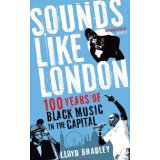 Bear with me for a minute here; this will all make sense presently. Earlier this year I read “How Soon is Now?: The Madmen and the Mavericks who made Independent Music 1975-2005” by Richard King. It’s a very good book and a must for geeks like us, but it attracted a lot of criticism because it didn’t touch on the black music scene. Richard King was even accused, pathetically, of racism in some quarters; you might even have read about it. Personally, I prefer to read authors who write about subjects they understand and that really inspire them; if Richard King didn’t have the expertise, contacts or inspiration to write about the black music scene, then Lloyd Bradley certainly did.
Bear with me for a minute here; this will all make sense presently. Earlier this year I read “How Soon is Now?: The Madmen and the Mavericks who made Independent Music 1975-2005” by Richard King. It’s a very good book and a must for geeks like us, but it attracted a lot of criticism because it didn’t touch on the black music scene. Richard King was even accused, pathetically, of racism in some quarters; you might even have read about it. Personally, I prefer to read authors who write about subjects they understand and that really inspire them; if Richard King didn’t have the expertise, contacts or inspiration to write about the black music scene, then Lloyd Bradley certainly did.
The title is a little misleading; there’s very little about pre-1950s black music, and it also deals with regional English offshoots from the London scene but those aren’t criticisms, just observations. The reason for the comparison with Richard King’s book is that one of Lloyd Bradley’s recurring themes is that black British music has always developed and prospered healthily out of the mainstream when produced and distributed independently.
Once the book reaches the point where Lloyd Bradley can introduce interviews with the players who made black British music happen (the steel pan players, the jazzers, the sound system pioneers, the Britfunk players and the mainstream crossovers Eddy Grant, Janet Kay, Jazzie B and the rest), the narrative really takes off with stories of the sound systems and records being sold out of the back of a car and distributed around the country in the same way. Lloyd Bradley takes us through calypso, ska, reggae, lovers rock, dub, britfunk, 98 bpm, trip hop, jungle, d’n’b, UK garage, dubstep and grime along with a host of short-lived one-way streets with an unassuming and easy authority that is very seductive. If you want an introduction to black British music, this is the book for you.
OK, spoilers alert; I’ve relented. I’ll tell you that the chart-toppers Bob Stanley refers to in 1993 and 1995 respectively are Culture Beat’s “Mr Vain” and Celine Dion’s “Think Twice”, but you should still read the book. Actually you should read all of these books.
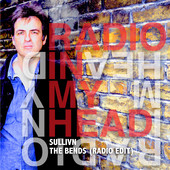 Ready or not, here it comes. It’s the second single from the Radio (in my) Head project and this time it’s the turn of Sullivn putting their highly individual stamp on “The Bends”. The band are John O’Sullivan (all vocals), Layla MK Kim (piano), Simon Goudarzi (guitars), Sjur Opsal (bass) and Jon Mar Ossurarson (drums). Now, I have to be completely honest here and admit that despite loving Radiohead, I can take or leave the original of that particular song. In fact, I’d rather leave it; if you can imagine Tom Verlaine singing alternately stoned and constipated, that’s how I hear Thom Yorke’s vocal on “The Bends”.
Ready or not, here it comes. It’s the second single from the Radio (in my) Head project and this time it’s the turn of Sullivn putting their highly individual stamp on “The Bends”. The band are John O’Sullivan (all vocals), Layla MK Kim (piano), Simon Goudarzi (guitars), Sjur Opsal (bass) and Jon Mar Ossurarson (drums). Now, I have to be completely honest here and admit that despite loving Radiohead, I can take or leave the original of that particular song. In fact, I’d rather leave it; if you can imagine Tom Verlaine singing alternately stoned and constipated, that’s how I hear Thom Yorke’s vocal on “The Bends”.
This version is a very different beast, opening quietly and intimately with close-up solo vocal and piano before the guitars, bass and drums come thundering in at the end of the verse. The song, at different times, features funk elements, big distorted guitars, twin guitar parts, hints of late Beatles production and some subtle piano touches throughout. There is a tremendous attention to detail as the vocal sound moves from full and resonant to thin and distant and the guitars play power chords followed by atonal fills. You need to do two things to get the most out of this; play loud and repeatedly. Your neighbours won’t mind.
The B-side is a remix of Sullivn’s first single “Come Back”, taking the song down a very different route from the fairly straightforward ballad treatment of the original with a very trip-hop dubby feel of Massive Attack and Portishead and very heavy bass. It’s not quite full on Lee Perry dub, but there’s a lot on interesting things going on there. Possibly even better than the original single mix.
So what you get here is a Radiohead cover that’s packed with invention and great performances along with a cracking B-side. I only wish I liked the original more so I could really emphasise how much more I like this version . It’s available from Tuesday October 8 on iTunes.
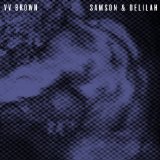 VV Brown’s second album opens with two songs that share Madonna titles but aren’t cover versions. “Substitute for Love” and “Nothing Really Matters” were two of the singles taken from the ultimate Madonna make-over album and mid-career return to form, 1998’s “Ray of Light”. Unhappy with the r’n’b follow up to “Bedtime Stories” (an r’n’b influenced collection itself), Madonna scrapped the entire sessions and hired electrohead, Brit, William Orbit, started calling herself Veronica Electronica and the rest is pop cultural history. Albeit on an entirely different scale, VV Brown has followed Madonna’s lead. About to release her follow up to the successful but underwhelming “Travelling at the Speed of Light” debut, Brown decided the hip hop and r’n’b-dominated follow up, a departure indeed from the nostalgic pop doo-wop of her debut, was not authentic and she walked away from the project and the album was never released. Two years on and as many career changes later she has returned with eleven angry, desolate and soulful songs set against a unsettling, uncompromising soundtrack and it is a startling reinvention indeed.
VV Brown’s second album opens with two songs that share Madonna titles but aren’t cover versions. “Substitute for Love” and “Nothing Really Matters” were two of the singles taken from the ultimate Madonna make-over album and mid-career return to form, 1998’s “Ray of Light”. Unhappy with the r’n’b follow up to “Bedtime Stories” (an r’n’b influenced collection itself), Madonna scrapped the entire sessions and hired electrohead, Brit, William Orbit, started calling herself Veronica Electronica and the rest is pop cultural history. Albeit on an entirely different scale, VV Brown has followed Madonna’s lead. About to release her follow up to the successful but underwhelming “Travelling at the Speed of Light” debut, Brown decided the hip hop and r’n’b-dominated follow up, a departure indeed from the nostalgic pop doo-wop of her debut, was not authentic and she walked away from the project and the album was never released. Two years on and as many career changes later she has returned with eleven angry, desolate and soulful songs set against a unsettling, uncompromising soundtrack and it is a startling reinvention indeed.
Samson & Delilah is released on VV Brown’s own YOY record label so it can assumed that this is what she wants to sound like now with little or no interference from outside parties, and that is remarkable. The aforementioned “Substitute For Love” opens in much the same way as the Madonna track opens “Ray of Light”, gently twinkling notes and ambient synths introduce Brown’s incredible voice which is now several tones lower; a contralto to rival Grace Jones and she sounds magnificent throughout. A dominant all-electronic backing that is somewhere between The Knife circa “Silent Shout” and Massive Attack at their most austere ( think “Sly”) with a mound of sticky dubstep coating the astounding, warrior-like, “Igneous”. It isn’t easy listening and the mood is pitch-black; a couple of songs like the title track can struggle to stand out when the melody is forsaken for a mood but these are minor niggles.
“The Apple”, by some distance the most instant and accessible track here, sounds amazing. Its rolling, funking electro pop assertiveness is magical and Brown has huge fun with the relentless put-downs that lyrically dominate: ‘Don’t testify me, don’t bring me down, don’t hold me captive, you’re not the apple of my eye you see’. “Nothing Really Matter” is a swirling, sombre and sharp-edged synth monster which would have sounded at home on Adult’s last album, VV Brown never before having hinted at this unlikely and inspired direction.
“Faith”, track eight of eleven, finally allows a chink of light to spill through and is more lifting sonically and melodically than anything preceding it. A duet with an uncredited male, it quietly references George Michael and with its theme of rebirth (‘I shake it off as I fall down to the ground, I belly flop into a swimming pool of sound, so you got to have faith’ ) and hope and a melody that will stick for days, it’s one of the strongest and most soulful songs here. “Ghosts”, in which Brown’s vocals spectacularly morph into 80’s singer songwriter Joan Armatrading, continues with similar themes and benefits from some simple but brilliantly constructed vocal effects over a droning organ and tight drum machines.
The album ends with two tracks which bring to mind a singer/songwriter who is now an almost-cliched reference point for artists and music fans alike. I’m loath to point out the similarities in the songwriting between that of the haunting “Knife” and Kate Bush’s “This Woman’s Work” and the foggy, suffocating album closer “Beginning”, which sounds like a lost track from Bush’s “Ninth Wave” concept album which formed the second part of ‘Hounds of Love’. These aren’t parodies though, as is often the case, they are very well crafted compositions from an artist who may or may not be familiar with Bush’s work (I suspect the former) and to draw such genuine comparisons is a compliment indeed.
“Samson & Delilah” never goes too far, gets too crazy or attention-seeking. The measured and meticulous tone and pacing of this album is a very large part of its success. VV Brown will have her work cut out for her when it comes to the initial promotion of this admittedly difficult album (for such a visual artist she has made the odd decision to hardly feature in the videos for the first two singles) and many will not make the connection between the Marks and Spencer model and former pop star and Brown’s current, definitive form. Twelve months down the line though, and many people will have hopefully been exposed to this album while having no idea who the artist is and it will become so something of a word-of-mouth slow burner. By any standards, this is a heartfelt and bold collection and a testament to VV Brown’s self belief.
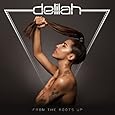 If you had given me this album, Delilah’s debut, and told me it had been in a time capsule since 1995 then I would probably believe you. I haven’t heard anything this influenced by that period’s prominent trip hop sound for a very long time but then everything comes back around again eventually I suppose.
If you had given me this album, Delilah’s debut, and told me it had been in a time capsule since 1995 then I would probably believe you. I haven’t heard anything this influenced by that period’s prominent trip hop sound for a very long time but then everything comes back around again eventually I suppose.
The surprise is that Delilah didn’t go to one of those British stage/ talent schools that Adele (there’s actually a song on here called “21” on here, it’s rubbish), Jessie J and Leona Lewis (to name just 3) went to, because Delilah sounds a little bit like all of these artists and the songs here sound as though they could be interchangeable between any these singers (and this does give a small clue that this album could only have been recorded in the last 4 years or so). The supposedly inspirational but horribly gloopy “Shades Of Grey” for example could feature as one of the many power ballads on any of those artists’ albums and in particular brings to mind Lewis’ “Bleeding Love” and Adele’s “Set Fire to the Rain” but is not as good as either. And “Only You” sounds like a pale, completely soulless imitation of Regina Spektor’s exhilarating “Us” and would be great as an advert for a diet hot chocolate drink. Delilah can sing but then so can lots of people, it’s what you do with your voice and surround it with that matters.
Trip hop was a mix of genres – hip hop, pop, dub, drum and bass, r ‘n’ b – that, more than anything else, was about creating a mood. It was ‘trippy’ and melancholic, dark and melodic and personally, I liked it a lot. Its Bristol-based pioneers (Massive Attack, Portishead, Tricky) ensured that the effect was narcotic, thick and uneasy but as time went by it became watered down beyond recognition and the choice of the post yuppie supper party and style magazine crowd (hello Morcheeba, not the worst offenders to be fair though) and this unfortunately is the sound that Delilah’s borrows from. I found it hard to actually find anything in the first 7 tracks to interest me, it was all so polite, tasteful and moody but in a very self conscious way it became the worst thing that I can say about music; part of the background.
There are small glimpses of inventiveness here particularly, ironically, on the Rufus and Chaka Khan-sampling, claustrophobic and bipolar “Go”’ but not so much on the Minnie Ripperton-sampling “Inside My Love” where it sounds as if they’ve said ‘let’s have another go at doing something like that Chaka Khan one we did’. “Love You So” is a good song and makes its point with strings and stomping and great verve. I could imagine Shara Nelson post-Massive Attack owning this, and “Tabitha, Mummy and Me” is a nice, simple and melodic piano lead ballad which certainly has something about it which makes me hope that Delilah can maybe become something more authentic and diverting. On the whole though, this is a dull but highly-polished, mediocre ode to the worst of the mid to late nineties.


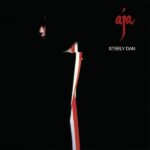 “Aja” – Steely Dan
“Aja” – Steely Dan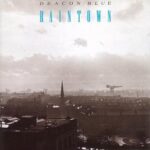 “Raintown” – Deacon Blue
“Raintown” – Deacon Blue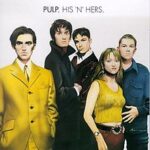 “His ‘n’ Hers” – Pulp
“His ‘n’ Hers” – Pulp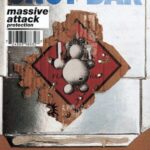 “Protection” – Massive Attack
“Protection” – Massive Attack